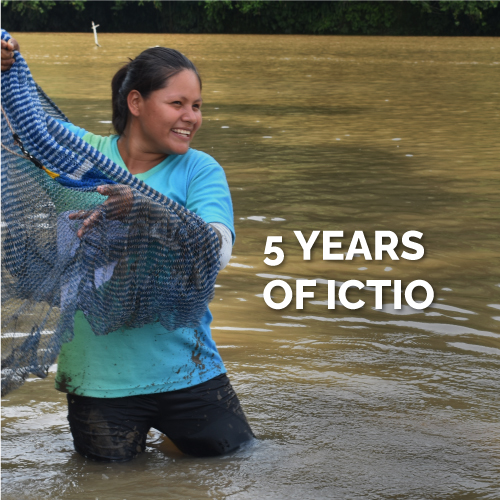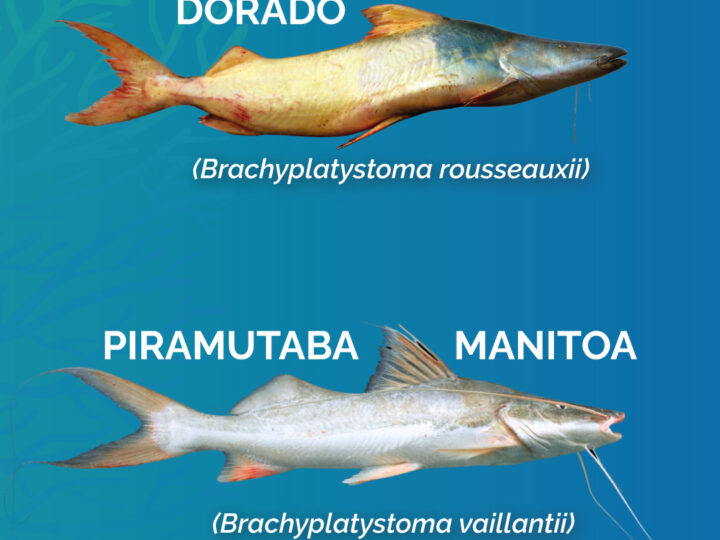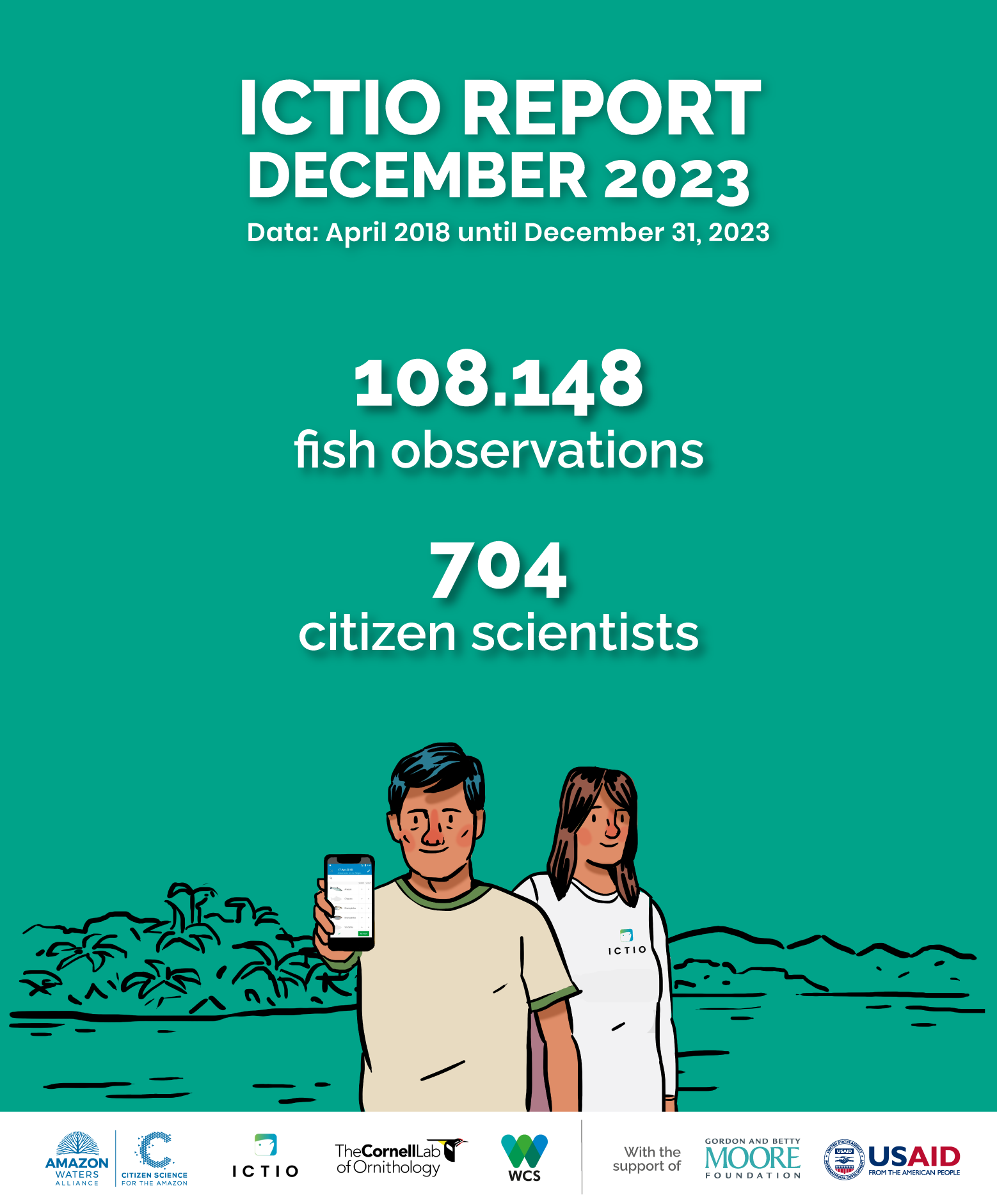
Ictio has reached the milestone of 108,148 observations of 119 fish species/groups shared by 704 citizen scientists and organizations (Figure 1).
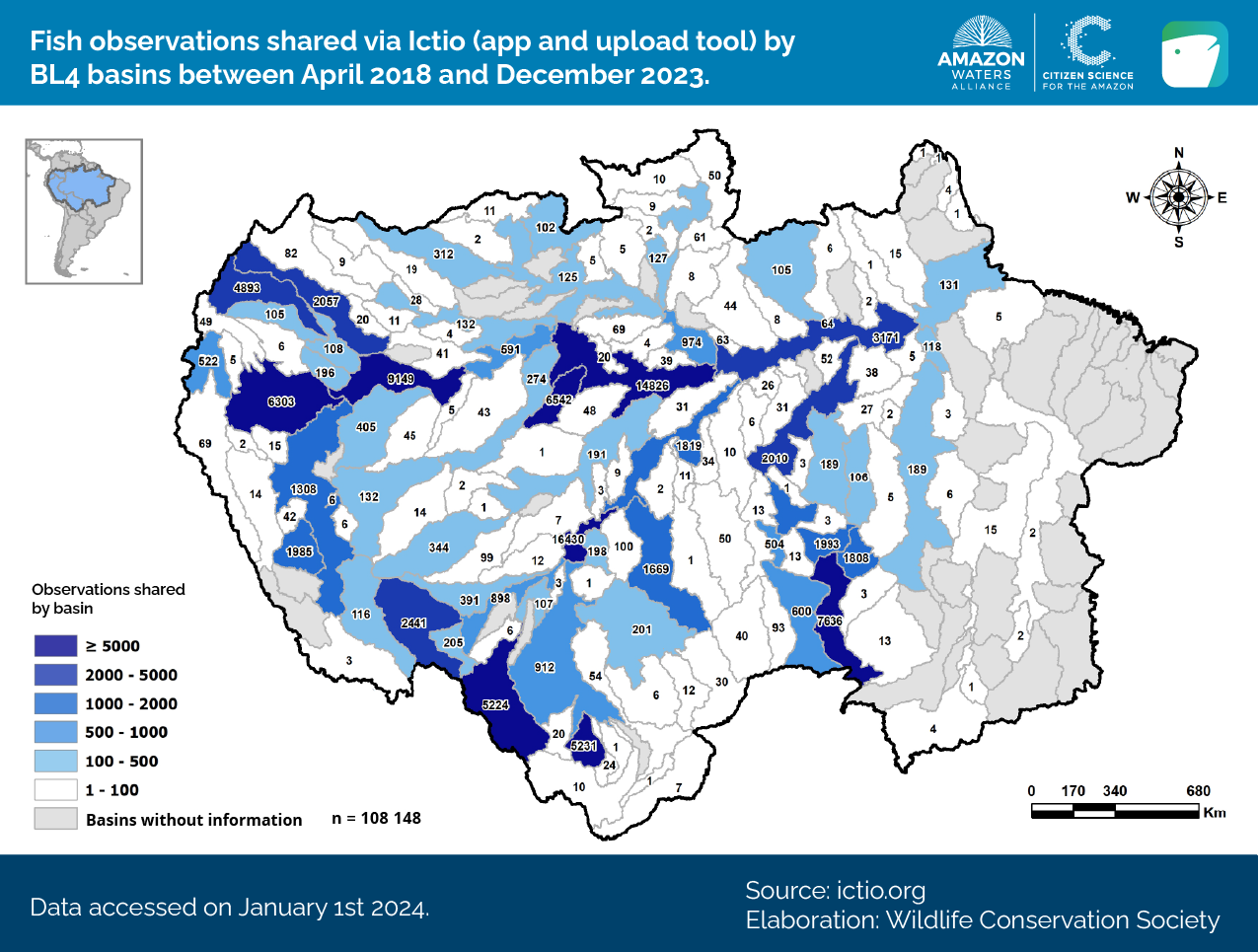
Figure 1 – As of 31 December 2023, Ictio has gathered a total of 108,148 fish observations in 62,400 lists (fishing events). This information was generated in 153 (77%) of the 199 level 4 sub-basins of the Amazon, the product of the contributions of 704 people and organizations.
Ictio has two ways of collecting data: the Ictio app (download link), which this quarter saw a 1.2% increase in the number of total observations recorded (totalling 21,899 observations); and via the ictio.org website.
In this quarter (October to December 2023), all new observations were recorded using the Ictio app, highlighting the important contributions made by fishermen and fisherwomen throughout the Amazon basin. Fishermen and fisherwomen from the Jaci Paraná (Brazil), Araguaia (below the Rio do Peixe) (Brazil) and Urubamba (Peru) sub-basins stood out with the highest percent increase in observations in their basins (Figure 2).

Figure 2 – Increase (%) in total lists recorded in Ictio, by BL4 level basins, shared with the Ictio application and upload tool (ictio.org) between October and December 2023.
Fish observations are spread across 153 of the 199 Level 4 (BL4) sub-basins in the Amazon (i.e. 77 per cent) (learn more about the classification of basins used by Ictio in Venticinque et al., 2016 – ‘New Geographic Information System (GIS) on rivers and basins for the conservation of aquatic ecosystems in the Amazon’). The ‘Madeira – above Jamari’ sub-basin remains the leader in the number of records with 16,430 observations.
The Ictio platform allows you to directly record 130 species/groups of species, plus the option ‘Other fish’ (‘Fish sp’) to record fish that are not already in the database. When reporting species using ‘Fish sp’, it is important to provide the name of the fish in the comments field, as well as include a photograph, so that it is possible to document species that are of interest to citizen scientists and possibly could be included in the database in the future.
Of the species/groups of species recorded on Ictio, the Yaraquí (Semaprochilodus insignis) continues to be the most recorded species (8,564 observations), followed by ‘Other fish’ (‘Fish sp’ – 7,525 observations), and the Tambaqui (Colossoma macropomum) with 6,679 observations (Figure 3).
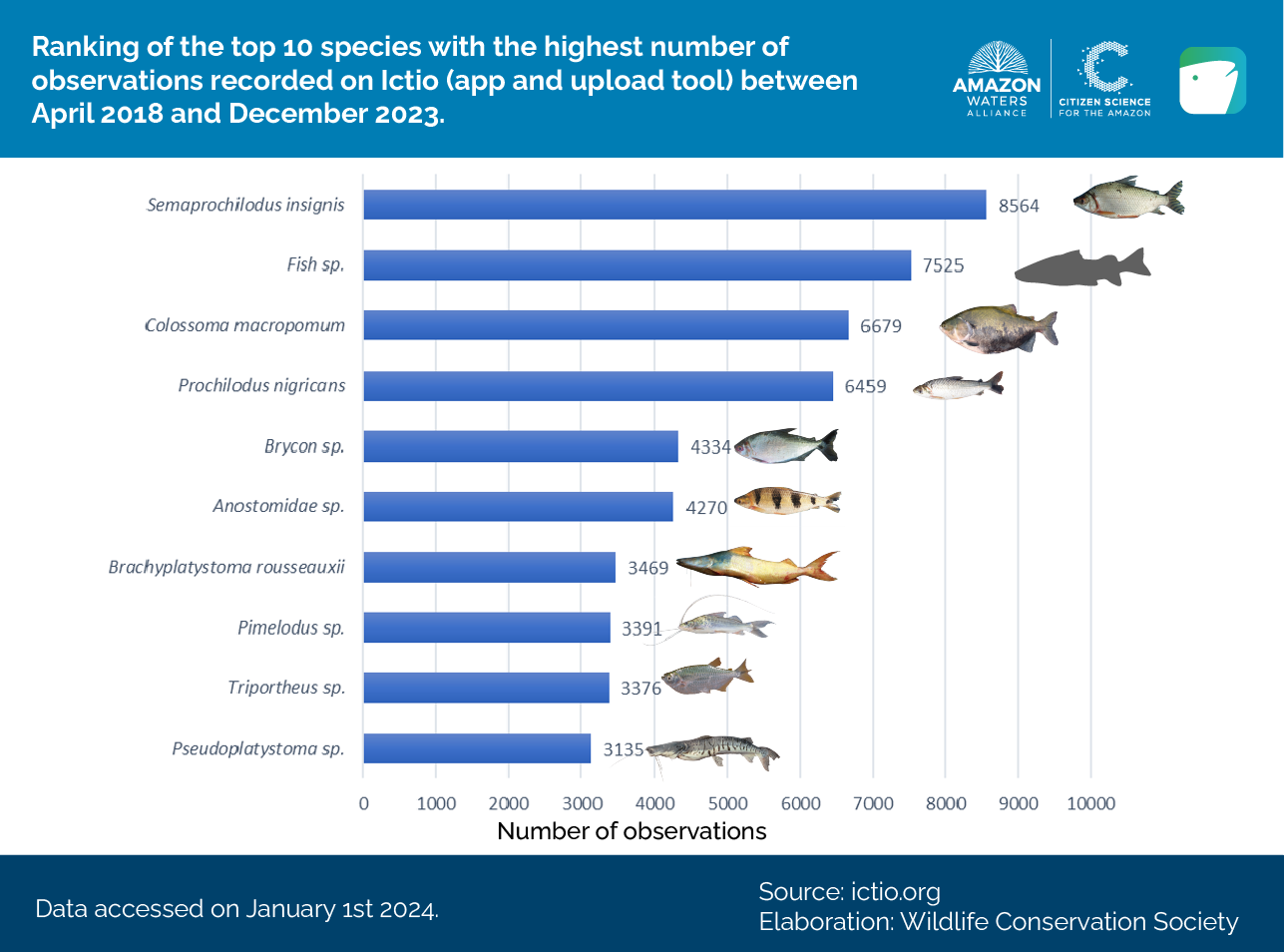
Figure 3 – The most recorded fish species/groups in Ictio as of 31 December 2023.
In December 2023, the dourada (Brachyplatystoma rousseauxii) was classified by the IUCN as a ‘Vulnerable’ (VU) species (more information in the IUCN Red List). The scientists responsible for gathering the information identified a probable population decline of this large migratory catfish, mainly due to the construction of dams for hydroelectric projects and the overexploitation of this important fishing resource. The dourada is a priority species, as it is a sentinel species for the health and connectivity of Amazonian aquatic ecosystems. In Ictio, there are 3,469 observations of dourada (Figure 4).
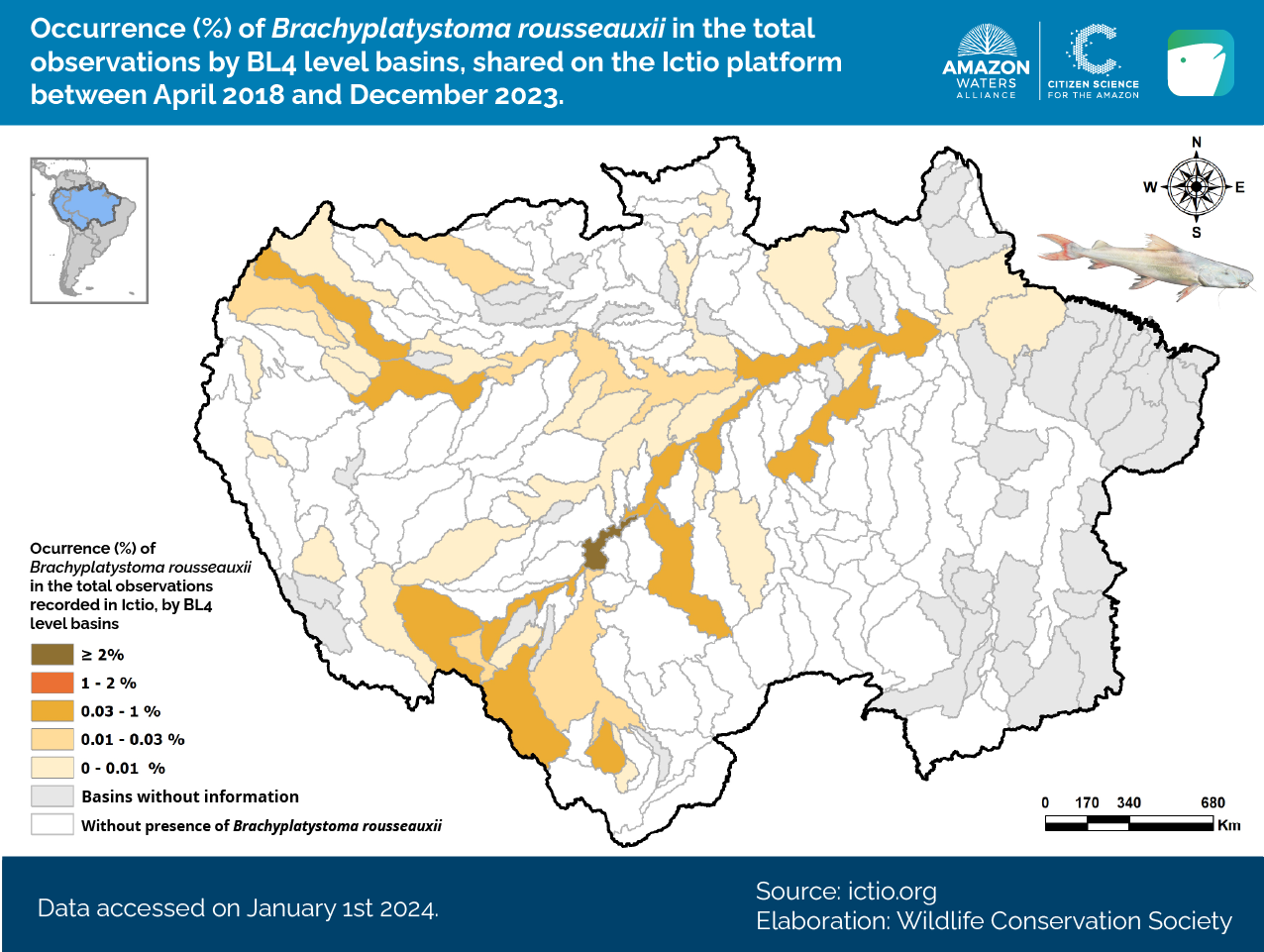
Figure 4- Map of dourada (Brachyplatystoma rousseauxii) occurrence according to records in Ictio in the Amazon Basin.
CITIZEN SCIENCE FOR THE AMAZON
Our community is very proud to have reached the milestone of 704 citizen scientists and organizations interested in sharing fish observations in the Amazon basin. Fish are a very important natural resource for Amazonian human populations, forming part of their culture and providing food and income for millions of people. The conservation of these resources, which cannot be achieved without proper research and management, is the responsibility of all of us. That’s why Ictio users and the entire Amazon Waters Alliance community are united in carrying out important actions to understand and conserve Amazon fish.
In November 2023, during the XV International Congress on Wildlife Management in the Amazon and Latin America (CIMFAUNA), we held a Knowledge Dialogue in Santa Marta, Colombia, which brought together fishers, scientists and technicians to talk about Participatory Fisheries Management experiences in the Amazon. We presented experiences from eight areas of the Amazon region during four days of exchanging experiences and learning how to scale up good practices for the conservation of fisheries resources (Figure 5). You can find more information about the event at this link and in the video of the meeting.
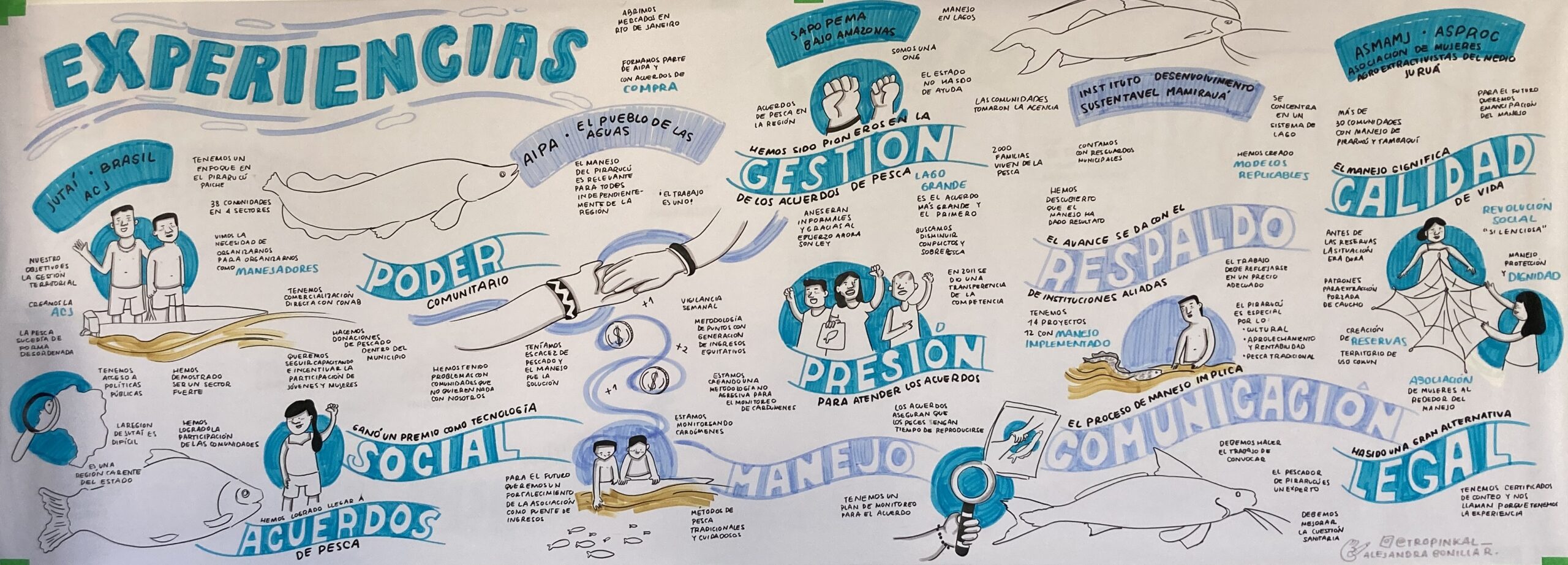
Figure 5 – Participatory Management experiences presented at the Knowledge Dialogue held during the XV CIMFAUNA in Santa Marta, Colombia.
In December 2023, Liseth Chuim, one of our community’s citizen scientists, took part as a trainer in Ictio in the Aguarico region of Ecuador. Liseth is an Indigenous woman representing the Shuar community of Kaputna and she shared her experiences using the Ictio application and how her community has been monitoring and recording important information about migratory fish in their region (Figure 6). You can find out more about Liseth in Answers From A Citizen Scientist In The Ecuadorian Amazon | AGUAS AMAZÓNICAS (aguasamazonicas.org) and learn more about her participation as an Ictio trainer in Six communities in Aguarico strengthen their capacities and exchange experiences on territorial management with the support of WCS Ecuador > WCS Ecuador.
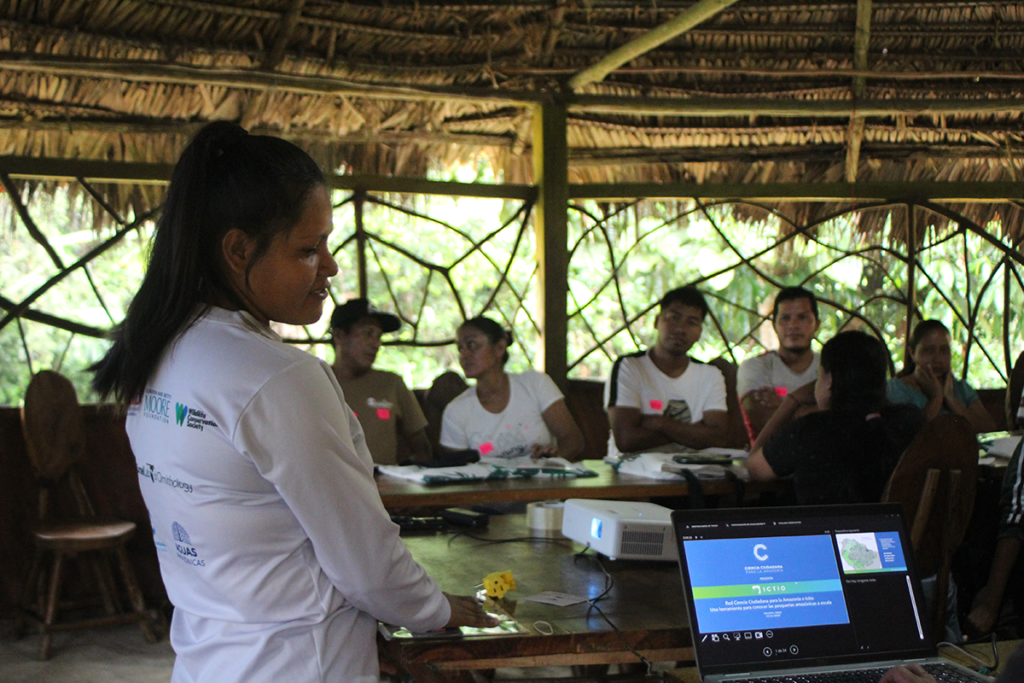
Figure 6 – Citizen scientist Liseth Chuim during her activities as an Ictio trainer
The figures in this note and other data interpretation products are available at the link below.
GLOSARIO
Listas: Listas de peces capturados en un evento de pesca
Cuencas BL4: Cuencas nivel 4 (basin level en inglés) es aquella escala que delimita todas las subcuencas tributarias entre 10.000 km² y 100.000 km².
Observaciones: Registros de especies/grupos de especies de peces capturados en la Cuenca Amazónica.
Usuarios: Ciudadanos amazónicos que utilizan la app o plataforma Ictio. Grupo compuesto principalmente por poblaciones locales e indígenas, pescadores, grupos de manejo, asociaciones de pescadores y científicos.

Esta nota ha sido posible gracias al apoyo de la Fundación Gordon y Betty Moore y del pueblo de los Estados Unidos a través de la Agencia de los Estados Unidos para el desarrollo Internacional (USAID). Los contenidos son responsabilidad de Wildlife Conservation Society, y no reflejan necesariamente los puntos de vista de la Fundación Moore, de USAID o el Gobierno de los Estados Unidos.



